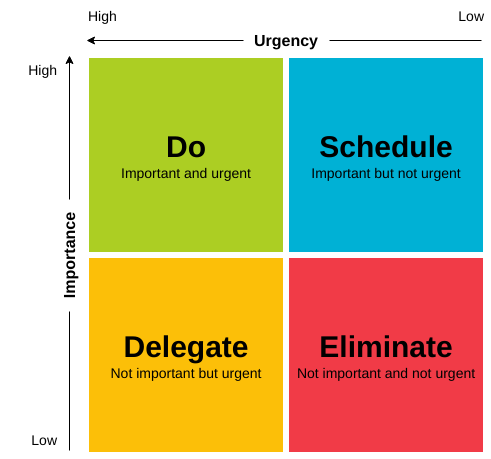37: Method of MoSCoW: Choosing What to Work On Next

What is the Moscow Method?
The MoSCoW method comes from Dai Clegg who is a data modeling expert. During his time at Oracle, he first came up with the MoSCoW method to rank time-based projects. The method divided priorities into must-do, should-do, can-do, and won't-do.
Why did he choose to divide it this way? The conventional method to focus on tasks relies on a high, medium, low prioritization strategy.
I have often struggled using the high, medium, low conventional method due to it's generic nature.
Let' see how and why the new method works as a better alternative.
How and Why to use the MoSCoW Method
1. Must do
These include things that need to get done as soon as possible and are vital. Questions to ask yourself to see if something is a must-do:
1. What happens if this is not done?
2. Is there a simpler way to do this task?
3. Will the project halt without this task?
2. Should do
These include things that are important but not vital at the moment. Getting ahead on these after the completed Must-do's puts you ahead of deadlines. This is the thinking for the long-term by actively focusing on delayed gratification.
3. Could Do
This includes as Clegg says "nice-to-haves". Whenever you find yourself bored even after doing a bunch of things to entertain yourself you can do these. This is something that can be done to work on projects in a sense called doing a slow burn as Tiago Forte puts it. Working on a ton of projects over time so it's not always heavy lifting all the time.
4. Won't Do
The “won't-do” is pretty intuitive to understand. Tasks which are not providing any value towards your larger goals or align with your values. There is an important thing to remember here: sometimes things might seem fun because our brain craves dopamine, but we need to look past that and then decide the worth of each task.
One thing to take note of "won't do" can include tasks that might get done at a later time. It is that they are not worth the time investment in the current timeline.
What is it like etc and connects with?
“Most things which are urgent are not important, and most things which are important are not urgent.” - Dwight Einsenhower

The Eisenhower Matrix is a very popular strategy shared all across the web.
1. Important & Urgent
2. Important but Not Urgent
3. Not Important but Urgent
4. Not Important & Not Urgent
These four quadrants use time as the main factor for categorizing tasks. It's important to have some time during the week to assess the priorities again because things can change. It's not a strict rule to follow and allows for a change where it is necessary to get the most out of our time.
The MoSCoW method combined with the Eisenhower Matrix makes it a complementary mix.
The best part of the MoSCoW method is the simplicity behind it. It is like a pre-flight manual before the take-off. It is impossible to always be working as that is a surefire way to burnout. Train like it's a marathon and use the tools available to you to keep going in the long run.
Thank you for taking the time to read this article. The support means a lot. If you’d like to share this article you can do that below.
If you found this valuable ☀️ then why not share it with someone you know who might be interested who can join us? 📨
Let’s keep growing! 🚀
If you’re new on the journey, welcome aboard! 👋🏾
Have a great week! 📅
Connect with me: All My Links 🤝
